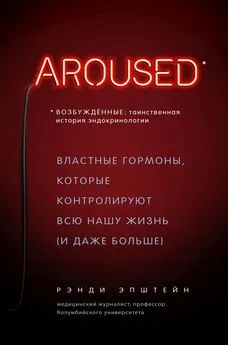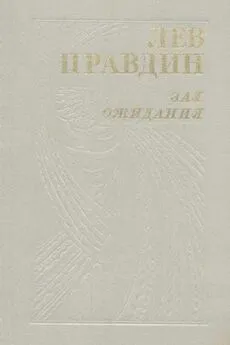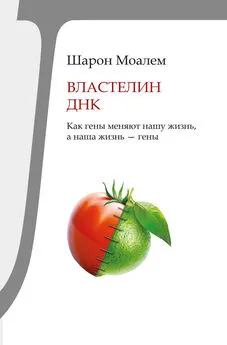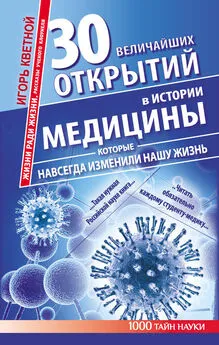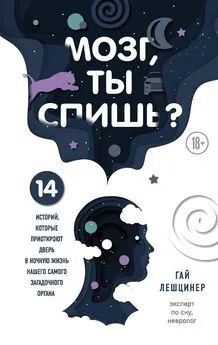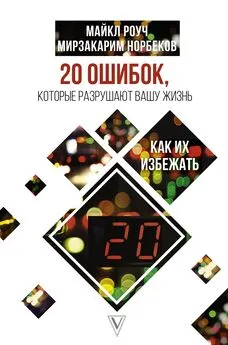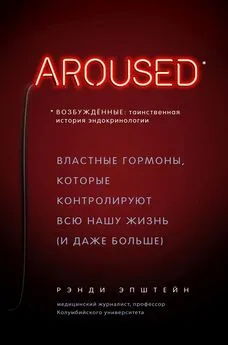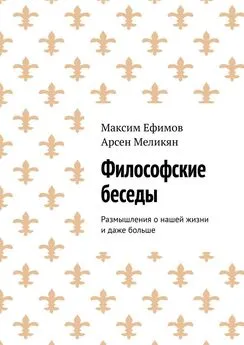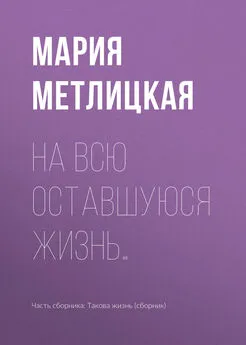Рэнди Эпштейн - Возбуждённые: таинственная история эндокринологии. Властные гормоны, которые контролируют всю нашу жизнь (и даже больше)
- Название:Возбуждённые: таинственная история эндокринологии. Властные гормоны, которые контролируют всю нашу жизнь (и даже больше)
- Автор:
- Жанр:
- Издательство:Литагент 5 редакция «БОМБОРА»
- Год:2019
- Город:Москва
- ISBN:978-5-04-098996-6
- Рейтинг:
- Избранное:Добавить в избранное
-
Отзывы:
-
Ваша оценка:
Рэнди Эпштейн - Возбуждённые: таинственная история эндокринологии. Властные гормоны, которые контролируют всю нашу жизнь (и даже больше) краткое содержание
Возбуждённые: таинственная история эндокринологии. Властные гормоны, которые контролируют всю нашу жизнь (и даже больше) - читать онлайн бесплатно ознакомительный отрывок
Интервал:
Закладка:
10. “Testosterone,” Time .
11. Sarita Metzger and Arthur L. Burnett, “Impact of Recent FDA Ruling on Testosterone Replacement Therapy (TRT),” Translational Andrology and Urology 5, no. 6 (2016): 921–926. Пример выпуска новостей: Julie Revelant, “10 Warning Signs of Low Testosterone Men Should Never Ignore,” Fox News Health, July 18, 2016, http://www.foxnews.com/health/2016/07/18/10-warning-signs-low-testosterone-men-should-never-ignore.html.
12. August Werner, “The Male Climacteric,” Journal of the American Medical Association 112, no. 15 (1939): 1441.
13. Доктор Джон Морли, интервью автора.
14. Stephen R. Braun, “Promoting ‘Low T’: A Medical Writer’s Perspective,” JAMA Internal Medicine 173, no. 15 (2013): 1458–1460.
15. Стивен Браун, интервью автора.
16. C. Lee Ventola, “Direct-to-Consumer Pharmaceutical Advertising: Therapeutic or Toxic?” Pharmacy and Therapeutics 36, no. 10 (2011): 669–684; Samantha Huo et al., “Treatment of Men for ‘Low Testosterone’: A Systematic Review,” PLOS ONE 11, no. 9 (2016): e0162480.
17. Hoberman, Testosterone Dreams , 120.
18. Metzger and Burnett, “Impact of Recent FDA Ruling.”
19. Shalender Bhasin et al., “Testosterone Therapy in Adult Men with Androgen Defi ciency Syndromes: An Endocrine Society Clinical Practice Guidline,” Journal of Clinical Endocrinology and Metabolism 95, no. 6 (2010): 2536–2559; Frederick Wu et al., “Identifi cation of Late-Onset Hypogonadism in Middle-Aged and Elderly Men,” New England Journal of Medicine 363, no. 2 (2010): 123–135; G. R. Dohle et al., “Guidelines on Male Hypogonadism,” European Association of Urology, 2014, http://uroweb.org/wp-content/uploads/18-Male-Hypogonadism_LR1.pdf.
20. Joseph Scott Gabrielsen et al., “Trends in Testosterone Prescription and Public Health Concerns,” Urologic Clinics of North America 43, no. 2 (2016): 261–271; Katherine Margo and Robert Winn, “Testosterone Treatments: Why, When, and How?” American Family Physician 73, no. 9 (2006): 1591–1598.
21. L. M. Schwartz and S. Woloshin, “Low ‘T’ as in ‘Template’: How to Sell Disease,” JAMA Internal Medicine 173, no. 15 (2013): 1460–1462.
22. W. J. Bremner et al., “Loss of Circadian Rhythmicity in Blood Testosterone Levels with Aging in Normal Men,” Journal of Clinical Endocrinology and Metabolism 56, no. 6 (1983): 1278–1281.
23. Fred Sattler et al., “Testosterone and Growth Hormone Improve Body Composition and Muscle Performance in Older Men,” Journal of Clinical Endocrinology and Metabolism 94, no. 6 (2009): 1991–2001.
24. Доктор Александр Пастушак, интервью автора.
25. A. M. Matsumoto, “Effects of Chronic Testosterone Administration in Normal Men: Safety and Effi cacy of High Dosage Testosterone and Parallel Dose-Dependent Suppression of Luteinizing Hormone, Follicle-Stimulating Hormone, and Sperm Production,” Journal of Clinical Endocrinology and Metabolism 70, no. 1 (1990): 282–287.
26. L. Frederiksen et al., “Testosterone Therapy Decreases Subcutaneous Fat and Adiponectin in Aging Men,” European Journal of Endocrinology 166 (2012): 469–476.
27. Shehzad Basaria et al., “Adverse Events Associated with Testosterone Administration,” New England Journal of Medicine 363, no. 2 (2010): 109–122; S. Basaria et al., “Effects of Testosterone Administration for 3 Years on Subclinical Atherosclerosis Progression in Older Men with Low or Low-Normal Testosterone Levels: A Randomized Clinical Trial,” Journal of the American Medical Association 314, no. 6 (2015): 570–581.
28. P. J. Snyder et al., “Effects of Testosterone Treatment in Older Men,” New England Journal of Medicine 374, no. 7 (2016): 611–624.
29. Felicitas Buena et al., “Sexual Function Does Not Change when Serum Testosterone Levels Are Pharmacologically Varied within the Normal Male Range,” Fertility and Sterility 59, no. 5 (1993): 1118–1123; Christina Wang et al., “Transdermal Testosterone Gel Improves Sexual Function, Mood, Muscle Strength, and Body Composition Parameters in Hypogonadal Men,” Journal of Clinical Endocrinology and Metabolism 85, no. 8 (2000): 2839–2853.
30. Доктор Шалендер Бхасин, интервью автора.
31. Darius Paduch et al., “Testosterone Replacement in Androgen-Defi cient Men With Ejaculatory Dysfunction: A Randomized Controlled Trial,” Journal of Clinical Endocrinology and Metabolism 100, no. 8 (2015): 2956–2962; Snyder et al., “Effects of Testosterone Treatment in Older Men.”
32. S. M. Resnick et al., “Testosterone Treatment and Cognitive Function in Older Men With Low Testosterone and Age-Associated Memory Impairment,” Journal of the American Medical Association 317, no. 7 (2017): 717–727.
33. Partnership for the Accurate Testing of Hormones, “PATH Fact Sheet: The Importance of Accurate Hormone Tests,” Endocrine Society, Washington DC, 2017.
34. Доктор Мохит Кера, интервью автора. Mohit Khera et al., “Adult-Onset Hypogonadism,” Mayo Clinic Proceedings 91, no. 7 (2016): 908–926. Mohit Khera, “Male Hormones and Men’s Quality of Life,” Current Opinion in Urology 26, no. 2 (2016): 152–157.
35. Joel S. Finkelstein et al., “Gonadal Steroids and Body Composition, Strength, and Sexual Function in Men,” New England Journal of Medicine 369, no. 11 (2013): 1011–1022.
36. Eder, “The Birth of Gender,” 83.
37. Natasha Singer, “Selling That New-Man Feeling,” New York Times , November 23, 2013; Sky Chadde, “How the Low T Industry Is Cashing in on Dubious, and Perhaps Dangerous, Science,” Dallas Observer , November 12, 2014; Sarah Varney, “Testosterone, The Biggest Men’s Health Craze Since Viagra, May Be Risky,” Shots: Health News from NPR , April 28, 2014, www.npr.org/sections/healthshots/2014/04/28/305658501/
prescription-testosterone-the-biggest-men-s-health-craze-since-viagra-may-be-ris.
38. Рона Шварцберг, советник по образованию Американской академии антивозрастной медицины, интервью автора. https://www.a4m.com/certification-in-metabolic-and-nutritional-medicine.html.
39. Weintraub, Selling the Fountain of Youth .
40. Adriane Fugh-Berman, “Should Family Physicians Screen for Testosterone Defi ciency in Men?” American Family Physician 91, no. 4 (2015): 227–228; J. J. Heidelbaugh, “Should Family Physicians Screen for Testosterone Defi ciency in Men? Yes: screening for testosterone defi ciency is worthwhile for most older men,” American Family Physician 91, no. 4 (2015): 220–221.
41. Arlene Weintraub, “What’s Next For The Thousands Of Angry Men Suing Over Testosterone?” Forbes online, April 6, 2015, http://www.forbes.com/sites/arleneweintraub/2015/04/06/whats-next-for-the-thousands-of-angry-men-suing-over-testosterone/-3915fbe04042; Arlene Weintraub, “AbbVie Challenges Fairness of Upcoming Testosterone Trials,” Forbes online, August 17, 2015, https://www.forbes.com/forbes/welcome/?toURL= https://www.forbes.com/sites/arleneweintraub/2015/08/17/abbvie-challenges-fairness-of-upcoming-testosterone-trials/&refURL= https://www.google.com/&referrer https://www.google.com/; Arlene Weintraub, “Testosterone Suits Soar Past 2,500 As Legal Milestone Looms For AbbVie,” Forbes online, October 30, 2015, http://www.forbes.com/sites/arleneweintraub/2015/10/30/testosterone-suits-soar-past-2500-as-legal-milestone-looms-for-abbvie/-229d1abc4b11; Arlene Weintraub, “Why All Those Testosterone Ads Constitute Disease Mongering,” Forbes online, March 24, 2015, http://www.forbes.com/sites/arleneweintraub/2015/03/24/why-all-those-testosterone-ads-constitute-disease-mongering/-711bf0463043.
42. Lisa Schencker, “AbbVie Must Pay $150 Million over Testosterone Drug, Jury Decides,” Chicago Tribune , July 24, 2017, http://www.chicagotribune.com/business/ct-abbvie-androgel-decision-0725-biz-20170724-story.html.
43. Доктор Питер Клопфер, интервью автора.
Эта глава написана на основе интервью с доктором Питером Клопфером, почетным профессором биологии Университета Дюка; доктором Кортом Педерсеном, профессором психиатрии и нейробиологии Университета Северной Каролины; и доктором Робертом Фромке, до центом нейробиологии Нью-Йоркского университета, в чьей лаборатории я побывала. Доктор Гидеон Нейв, до цент маркетинга Уортоновской школы Пенсильванского университета, помог мне разобраться со статистикой. Док тор Стив Чанг, доцент психологии и нейробиологии Йельского университета, рассказал мне о своей работе с обезьянами и окситоцином; доктор Дженнифер Барц, доцент психологии Университета Макгилла, говорила со мной о связи окситоцина и аутизма. Также я взяла интервью у доктора Майкла Платта, профессора антропологии Пенсильванского университета, и доктора Джеймса Хайэма, главного исследователя репродуктивной экологии и эволюции приматов Нью-Йоркского университета.
1. John G. Simmons, “Henry Dale: Discovering the First Neurotransmitter,” chapter in Doctors and Discoveries: Lives that Created Today’s Medicine (Boston: Houghton Miffl in Harcourt, 2002), 238–427.
2. H. O. Schild, “Dale and the Development of Pharmacology: Lecture given at Sir Henry Dale Centennial Symposium, Cambridge, 17–19 September 1975,” British Journal of Pharmacology 120, Suppl. 1 (1997): 504–508; www.nobelprize.org/novel_prizes/medicine/laureates/1936/dale-bio.html.
3. Sir Henry Dale, “On Some Physiological Aspects of Ergot,” Journal of Physiology 34: 163–206.
4. Mavis Gunther, “The Posterior Pituitary and Labour,” letter to the editor, British Medical Journal 1948, no. 1: 567.
5. Peter H. Klopfer, “Mother Love: What Turns It On? Studies of Maternal Arousal and Attachment in Ungulates May Have Implications for Man,” American Scientist 59, no. 4 (1971): 404–407.
6. David Gubernick and Peter H. Klopfer, eds., Parental Care in Mammals (New York: Plenum Press, 1981).
7. Klopfer, “Mother Love.”
8. E. B. Keverne et al., “Vaginal Stimulation: An Important Determinant of Maternal Bonding in Sheep,” Science 219, no. 4580 (1983): 81–83.
9. M. L. Boccia et al., “Immunohistochemical Localization of Oxytocin Receptors in Human Brain,” Neuroscience 253 (2013): 155–164; Cort Pedersen et al., “Intranasal Oxytocin Blocks Alcohol Withdrawal in Human Subjects,” Alcoholism: Clinical and Experimental Research 37, no. 3 (2013): 484–489; Cort A. Pedersen, Oxytocin in Maternal, Sexual and Social Behaviors (New York: New York Academy of Sciences, 1992).
Читать дальшеИнтервал:
Закладка:
